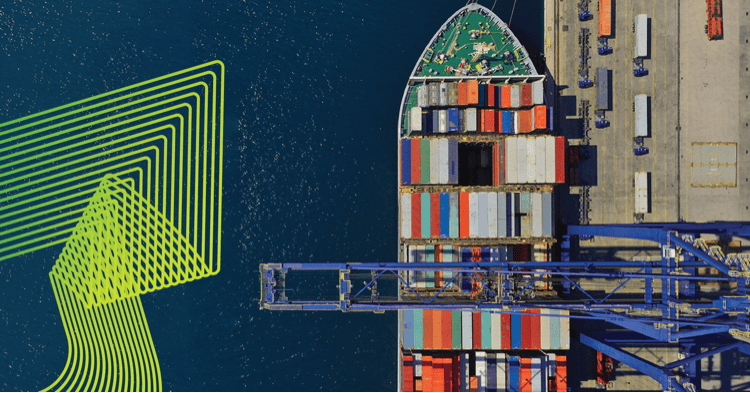Through Seerist’s strategic partnership with Control Risks, the Seerist solution offers on-the-ground insight into Qatar country risk from an analyst ahead of the FIFA World Cup, which is held from November 20 through December 18 and noted their preparedness to host the World Cup at the security and infrastructural level.
Overview
World Cup advertisements, including posters and billboards, are present in main parts of the city, on public transportation like metros, and on skyscrapers primarily in West Bay in the central area of Doha. The Arabic word al-Wa’ad (the promise) is one of the most dominant words promoting the tournament – it highlights Qatar’s promise to prepare and carry out the international event which comes amid high levels of skepticism, scrutiny, and criticism by media outlets and organizations, including human rights organizations. This context underscores the significance of understanding Qatar country risk during such a major event.
Attitudes towards the tournament differ among residents. Migrant workers, particularly in the transportation sector, are largely unenthusiastic due to the expected long working hours and the lack of flexibility in their work operations. Arab expatriates signal a sense of excitement as the tournament sheds an international spotlight on an Arab country and the region.
Meanwhile, some Qataris are proud to be the host country, while others are somewhat hesitant because they will face anticipated new and foreign cultural and social practices, such as the public consumption of alcohol.

3-2-1 Qatar Olympic and Sports Museum located next to the Sports City Stadium, Doha. Source: Control Risks
Preparedness
Our general assessment of Qatar’s readiness to host the World Cup is that they are moderately prepared.
The government implemented a baseline plan to hold the event but continues to update it frequently. For example, six days before the start of the tournament, the Qatari government ordered beer stations – which were supposed to be located around the eight different stadiums – to be relocated to more “obscure locations”. This plan pivoted again just two days prior to the tournament’s kickoff when it was announced that alcohol sales were banned from the perimeters of World Cup stadiums.
Qatar is not only the first Arab country to host the event, but it is also the smallest country to do so. It is likely to face many new challenges throughout the tournament, which will range from, for example, accommodating Qatari nationals who are not used to having to wait in line or walk for 30 minutes to watch a game to dealing with the use of drugs by attendees.
Six of the eight stadiums that will be used for the tournament are located in Doha, which is just 50.96 mi2 (132 km2), while the rest are on the outskirts of the city. The country is expecting an unprecedented 1.2m visitors during the World Cup, which is equal to more than a quarter of its population. As a result, Qatar is likely to continue to adjust its security and operational procedures during the remainder of the lead up to and throughout the tournament. Assessing Qatar country risk is crucial in this context.
Infrastructure
Public transportation, including the metro system, is operational and similar to those in cities in western countries. However, the high volumes of spectators looking to travel in short periods of time will lead to congestion at stations.
For instance, the inauguration match at the flagship stadium, Lusail, on September 9 suggests that public transport capacity is likely to be insufficient on networks to and from the stadiums. This raises questions about the ease of travel for fans who will mainly utilize shuttle services or metros to attend matches from regional tourism hubs such as Dubai.

Sports City Stadium, Doha. Source: Control Risks
Security
The government will continue to adjust security measures during the tournament. This is likely to include additional security rules, such as when entering and leaving the Fan Zones or stadiums during matches.
The government has also announced that foreign countries will provide police reinforcements and other types of security forces to support local law enforcement. The country is expecting around 32,000 government security personnel from at least 13 nations to help with security.
In preparation, the North Atlantic Treaty Organisation (NATO) provided different types of trainings for Qatari security forces, including against Chemical, Biological, Radiological and Nuclear (CBRN) threats in Slovakia in May. Qatar also conducted a five-day security exercise called “Watan” to train security personnel for the tournament. The drill included thousands of members of security forces from 13 states, including Saudi Arabia, Kuwait, Jordan, Turkey, Pakistan, France, and the US, which will jointly handle security at the event.
While these moves are positive, the ability of the security forces to ensure safety and deal with issues such as violence, including riots, during football matches remains to be seen.
Civil unrest is rare in Qatar, and local security forces are not typically accustomed to dealing with incidents arising at football matches. They will likely be tested on this immediately, particularly when handling fans in the first couple of weeks of the tournament.
Regarding foreign security forces, there are no guarantees that those deployed to Qatar will be adequately trained or experienced in dealing with football-related riot control. Furthermore, some countries that are sending security forces have yet to indicate the specific units they will deploy.
There has also been much speculation over how the country will deal with human rights issues and cultural norms that are different from those of western nations or most other countries that have previously hosted the event.
For instance, public display of affection, outward support for LGBTQ+ rights (such as slogans or flags) and homosexual activities are against the law in Qatar. According to Control Risks’ sources and public reports, security forces – both foreign and domestic – will tolerate visitors’ actions in this regard and will attempt to modestly prevent any such “displays” while avoiding related detentions and imprisonment.
Furthermore, authorities will likely resort to the deportation of spectators rather than their prosecution when faced with major offences such as riots or vandalism.
Business Implications
Foreign businesses operating in Qatar will face major operational disruption during the tournament. The government has advised and encouraged businesses to limit the number of employees in offices during the tournament and allow people to work from home to lift some pressure on the infrastructure.
Considering the Qatar country risk, authorities have announced that all schools will close, and some roads, particularly those along the Corniche area, will not be accessible for most vehicles. The government is also likely to frequently announce new measures related to the tournament without prior notice, such as restricting travel for residents in Qatar.
Outlook
The World Cup will benefit Qatar and the Arab Gulf states – including the UAE and Saudi Arabia that are expecting to host large numbers of spectators – by attracting visitors from across the globe. However, Qatar’s challenge will be in showcasing its ability to host such a large event operationally, culturally, and from a security standpoint.
International criticism and corruption allegations have cast shadows on the country’s legitimacy and its capability to host such a high-profile international event. A successful tournament will bolster Qatar’s bid to host the 2023 AFC Asian Football Cup.
How Seerist Assesses Qatar Country Risk: Global Data Meets Local Expertise
Seerist’s augmented analytics solution combines AI, machine learning, and expert human analysis to deliver trustworthy threat intelligence. By automating the collection of global data, capturing various shifts and swings, and filtering out the noise, Seerist provides valuable insights. These insights are seamlessly integrated into a user-friendly dashboard, ensuring swift and dependable decision-making in crucial moments.
Book a demo to see Seerist’s threat intelligence tools in action or follow us on LinkedIn to learn more about how Seerist helps you stay ahead of the curve.






